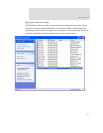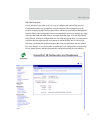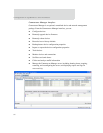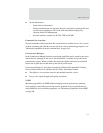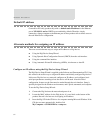
Configuration capabilities and interfaces
58
Simple Network Management Protocol (SNMP)
Simple Network Management Protocol (SNMP) is a protocol for managing and
monitoring network devices. The SNMP architecture enables a network administrator to
manage nodes--servers, workstations, routers, switches, hubs, etc.--on an IP network;
manage network performance, find and solve network problems, and plan for network
growth. Digi Cellular Family products support SNMP Version 1.
Advantages of SNMP include:
SNMP is easy to implement in extensive networks.
Programming new variables is easy.
SNMP is widely used. SNMP is a standard interface that integrates well with
network management stations in an enterprise environment. While its
capabilities are limited to device monitoring and display of statistics in Digi
Cellular Family devices, read/write capabilities are expected to be added to
Digi Cellular Family devices in future releases.
It is easy to ‘drop in’ new devices.
Disadvantages include:
As device communication is UDP-based, the communication is not secure. If
more secure communications with a device are required, an alternate interface
must be used.
SNMP does not allow for certain task that can be performed from the web
interface, such as file management, uploading firmware, or backing up and
restoring configurations.
Compared to the web or command-line interfaces, SNMP is limited in its
ability to set specific parameters, such as set port profile, is not possible.
Accessing the SNMP interface requires a tool, such as a network management station. The
management station relies on an agent at a device to retrieve or update the information at
the device, including Device configuration, status, and statistical information. This
information is viewed as a logical database, called a Management Information Base
(MIB). MIB modules describe MIB variables for a variety of device types and computer
hardware and software components.




